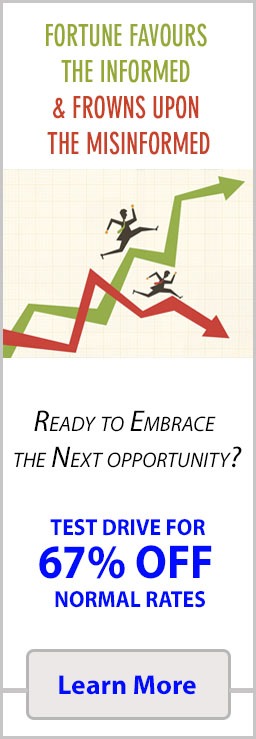
Paper Hands Meaning: No Discipline, No Gains, Just Portfolio Carnage
Jul 29, 2025
Welcome to the meme market coliseum, where fortunes are made, souls are broken, and the phrase “paper hands” is both an epithet and a eulogy. In this theatre of chaos, discipline is scarce, gains are fleeting, and the only thing guaranteed is the carnage of portfolios—and egos—left in the wake of collective delusion. Here, “paper hands” isn’t just a meme or a momentary lapse of courage; it’s the default setting of the crowd, a psychological glitch that keeps the casino alive and the house—always the house—rich.
The Anatomy of Paper Hands: Fear as Portfolio Manager
Let’s be clear: paper hands is the market’s most savage insult for those who sell too soon, panic at the first sign of red, and exit positions before the real moves begin. But beneath the meme lies a deeper pathology. Paper hands are not simply a lack of conviction; they are the inevitable outcome of trading without strategy, entering battles with no map, no armor, and no exit plan.
The paper-handed trader is ruled by lizard-brain impulses—dopamine spikes at green, cortisol floods at red. It’s not so much trading as it is reacting, a staccato dance of buy-high, sell-low, repeat, with each cycle eroding both capital and confidence. The social media echo chamber amplifies every twitch: one influencer shouts “HODL,” another posts their losses, and the crowd oscillates between greed and terror at the speed of a meme refresh.
Mackay’s Madness: Crowd Logic and the Art of Self-Destruction
Charles Mackay, chronicler of crowd madness, would look at paper hands and nod knowingly. The crowd, he wrote, “go mad in herds, while they only recover their senses slowly, one by one.” In the meme market, paper hands are not lone acts of cowardice—they are mass events, stampedes of panic selling that cascade through Reddit threads and TikTok feeds.
The paradox is delicious: paper hands are mocked by the same crowd that manufactures the very conditions for panic. The meme army demands “diamond hands,” stigmatising selling to keep the illusion alive and the liquidity flowing. But when the music stops, the same crowd that mocked paper hands suddenly becomes them, racing for the exits in a glorious, self-fulfilling rout.
Taleb’s Black Swan: Fragility in a World of Volatility
Nassim Taleb, prophet of the improbable, would see paper hands as the market’s natural prey—fragile participants in a world of fat tails and black swans. The meme trader lives in a fantasy of linear moves: buy, watch it moon, retire early. Reality is meaner. Volatility isn’t an invitation; it’s a test. When the inevitable drawdown comes, paper hands fold, and the market claims another scalp.
But the real danger is meta: paper hands don’t just lose money—they create fragility for everyone. Their predictable panic feeds algorithmic predators, triggers stop-loss cascades, and turns every shallow dip into a bloody plunge. The paper-handed aren’t just victims; they’re accomplices in their own ruin, unwitting agents of chaos that the market’s true professionals exploit with glee.
The Casino Floor: Dopamine, Delusion, and Market Warfare
Picture the meme market as a casino, but one where the chips are your hopes, the croupier is your fear, and the house edge is your own psychology. Paper hands are the twitchy gamblers who cash out just before the jackpot, then chase their losses at double the stakes. Every impulsive trade is a dopamine hit—win or lose, the high is in the action. But the odds are rigged, not by Wall Street, but by your own inability to regulate your emotional circuitry.
The meme stock boom of 2021-2025 was a Petri dish for this dynamic. GameStop, AMC, Bed Bath & Beyond—the tickers changed, but the story was always the same. The crowd piled in, chanting slogans and posting rocket emojis, then scattered at the first sign of trouble. Early sellers, branded “paper hands,” were mocked—until the inevitable dump, when those same mockers became desperate to unload their bags on someone even slower.
Sun Tzu’s Ghost: Strategy, Patience, and the Art of Market Survival
Sun Tzu taught that battles are won before they are fought; preparation and discipline, not impulse, decide the outcome. Paper hands are the market’s unprepared infantry—no plan, no patience, just a reflexive urge to run at the first whiff of smoke. The disciplined few, the true strategists, quietly accumulate while the crowd panics, then distribute as hope returns. It’s not bravery to hold through every plunge; it’s foolishness. The art is knowing when to strike, when to retreat, and when to let the enemy (the crowd) destroy itself.
In meme stock warfare, paper hands are the first casualties—not because they sold, but because they never knew why they bought. Their battlefield is littered with the corpses of impulsive trades and abandoned theses. They are cannon fodder in a war they barely understand, their capital recycled into the accounts of those who treat trading as a discipline, not a dopamine sport.
The Cycle of Carnage: From Euphoria to Capitulation
Every meme stock story traces the same arc: discovery, euphoria, consolidation, reckoning. Paper hands enter at euphoria, exit at reckoning, and never understand the cycle. They buy the spike, convinced this time is different. They sell the first dip, convinced disaster is imminent. The crowd moves as one, and each individual’s panic becomes the group’s avalanche.
This is not just financial loss; it’s psychic damage. The paper-handed trader is left scarred, gun-shy, forever chasing the next rocket but jumping out at the first turbulence. Their portfolios become graveyards of almosts—almost caught the bottom, almost held the moonshot, almost retired early. Almost, almost, almost.
The Institutional Harvest: How the Smart Money Farms the Crowd
The market’s professionals—hedge funds, market makers, algorithmic traders—don’t just tolerate paper hands; they depend on them. Every panic sell is a buy for someone with patience; every stop-loss cascade is a harvest engineered by those who know where the crowd will break. The meme stock era was a feeding frenzy: institutions let the crowd bid up junk stocks, then shorted them on the way down, feasting on the predictable cycle of retail fear.
Paper hands are the market’s most reliable liquidity providers. Their predictable panic creates the very volatility that lures them in, a perpetual motion machine of hope, hype, and horror. The meme crowd thinks it’s fighting Wall Street; in reality, it’s providing the raw material for Wall Street’s quarterly bonuses.
Diamond Hands: The Mirror Image of Failure
If paper hands are cowardice, “diamond hands” are often just delusion. The refusal to sell, no matter the loss, is not discipline—it’s denial. The meme mythos elevates stubbornness to virtue, encouraging the crowd to ride rockets back to earth, glorying in unrealized gains and ignoring looming losses. The truth is that both extremes—paper and diamond hands—are market failures. Discipline lies not in never selling, but in knowing why, when, and how to exit.
The crowd mocks paper hands and worships diamond hands, but both are captives of emotion, not strategy. The disciplined trader sits outside this binary, harvesting gains from both, playing the crowd as the crowd plays itself.
The Dopamine Trap: Why Most Will Never Escape
Why do paper hands persist? Because markets are designed to exploit human neurochemistry. Every green tick is a dopamine rush; every red tick is pain. Social media weaponises these impulses, creating an environment where fear and greed are amplified beyond reason. The trader’s brain is fried by the constant stimulus, unable to distinguish real risk from phantom threat.
Paper hands are not a failure of intellect; they’re a failure of emotional regulation. The solution isn’t more information—it’s more discipline. But in a market designed as a dopamine casino, discipline is in short supply.
Escaping the Trap: How to Survive the Meme Market Warzone
Survival requires a new mindset. The solution to paper hands isn’t diamond hands—it’s deliberate hands. Plan your entry, plan your exit, and stick to the plan. Accept that you’ll never buy the bottom or sell the top. Stop checking your portfolio every five minutes. Trade small enough that fear doesn’t dictate your moves. Recognize that every panic sell funds someone else’s yacht.
The market is a battlefield where emotion is the enemy. Paper hands are the casualties of that war—untrained, unprepared, and ultimately, unnecessary. The few who survive are not those who never panic, but those who have a plan for when the panic comes.
Final Warning: The Meta Game Is You
In the end, paper hands are not about markets—they’re about you. The crowd is both army and enemy. The battlefield is your own mind. The true victory is not in catching the next meme stock moon, but in escaping the cycle of hype and carnage with your sanity—and your bankroll—intact.
Dopamine-Grabbing Meta Description (20 words): Unmask “paper hands”—the meme market’s ultimate weakness. No discipline, no gains, just portfolio carnage. Escape the dopamine warzone—now.












